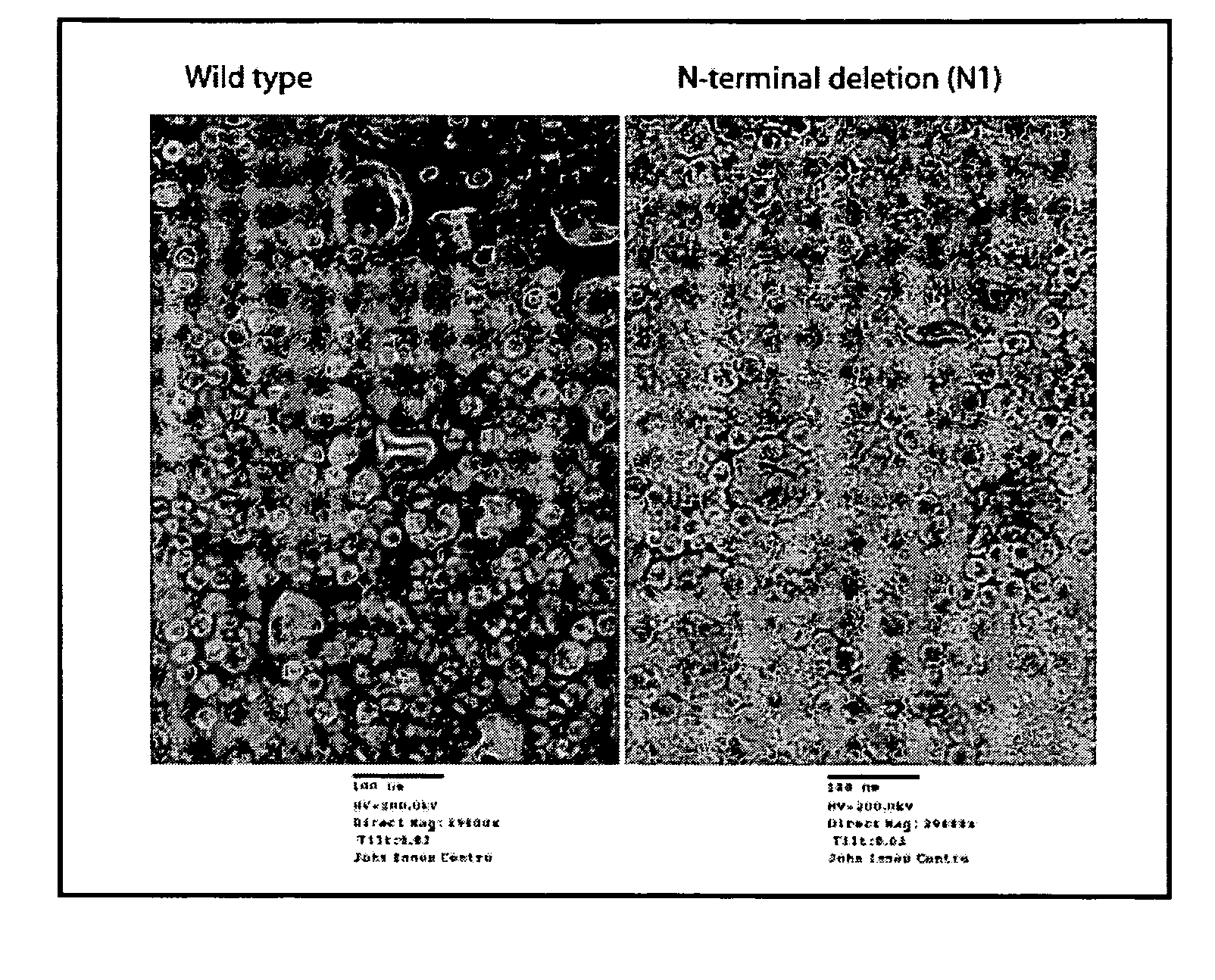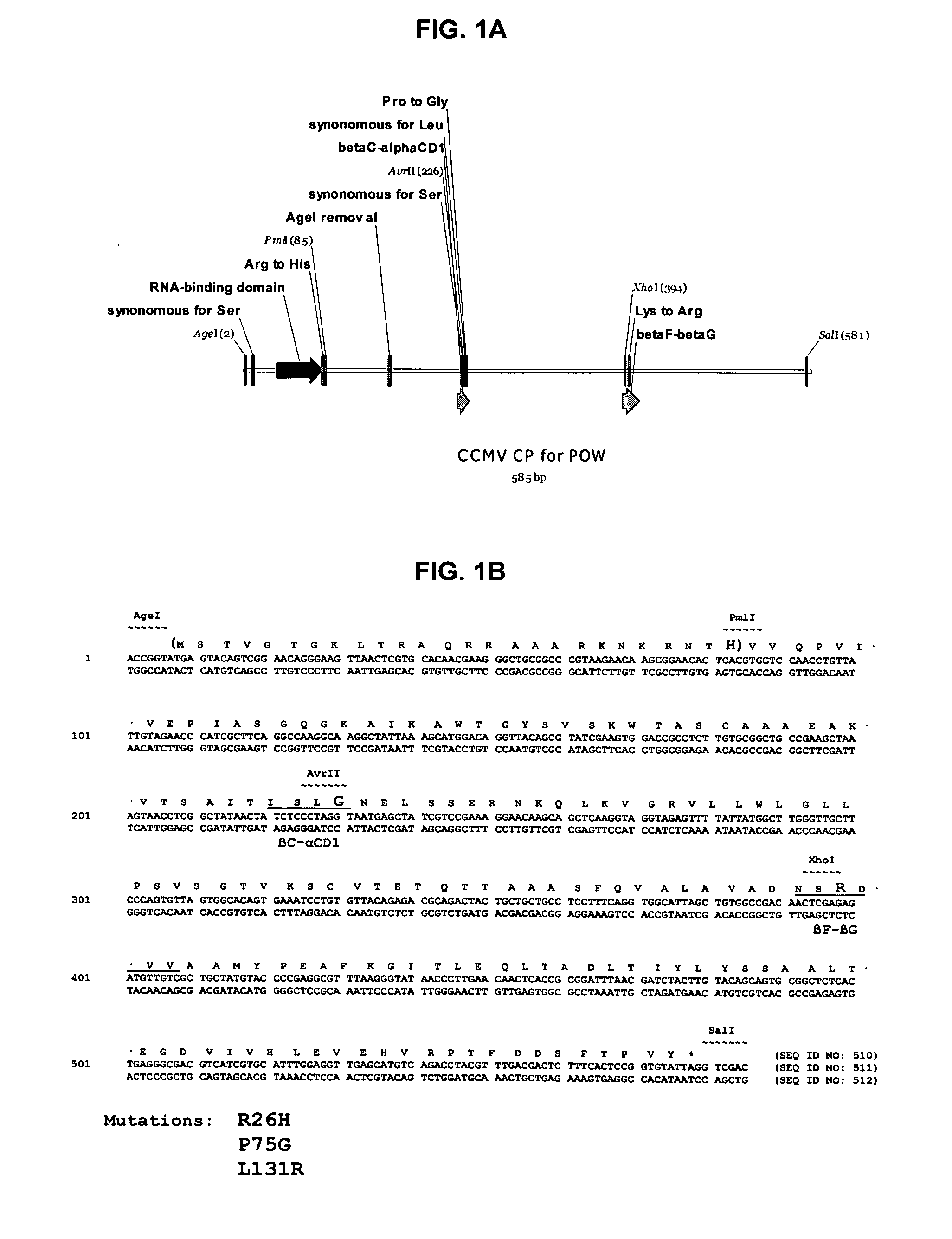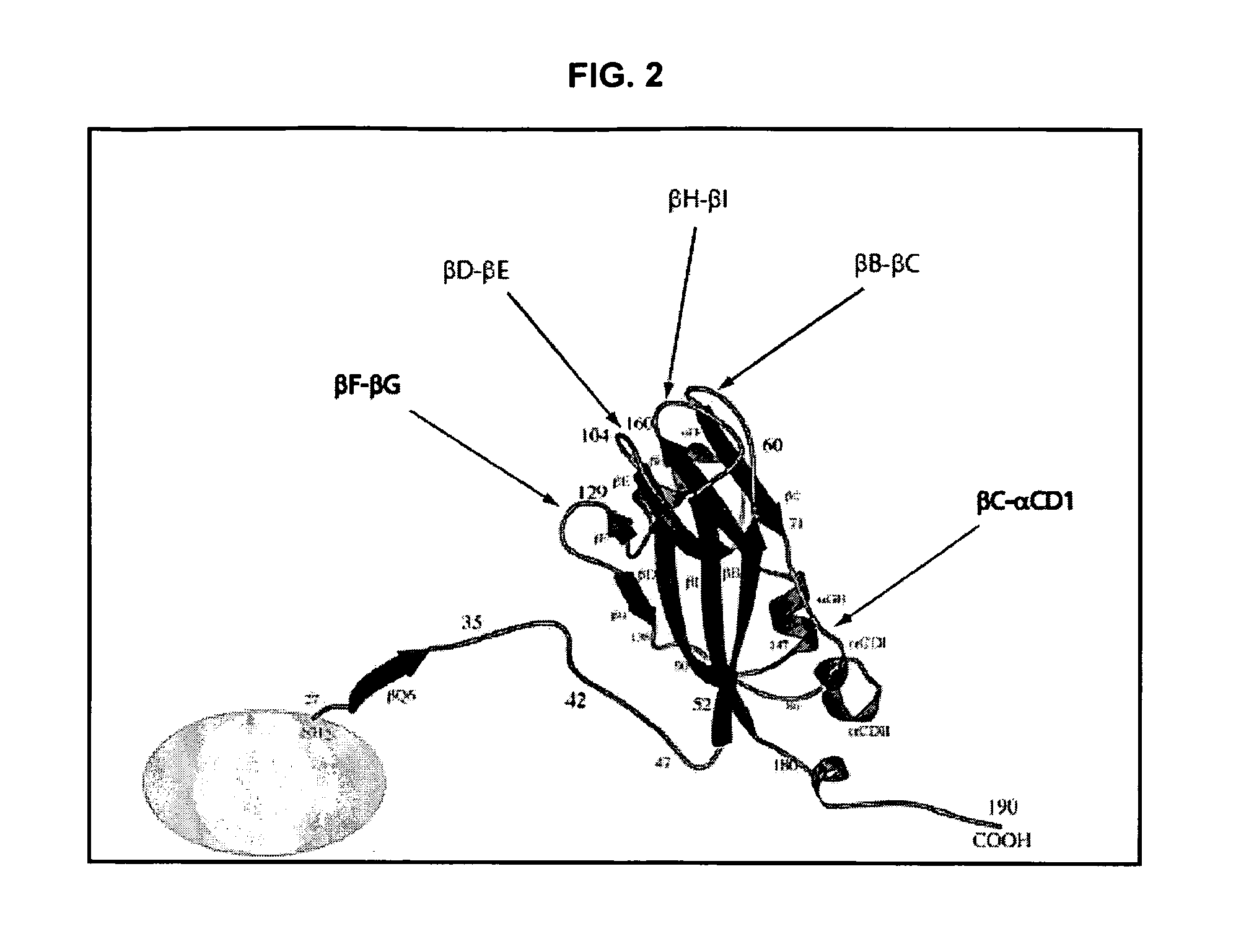Modified plant virus particles and uses therefor
a technology of plant virus and modified particles, which is applied in the direction of virus peptides, biocides, plant growth regulators, etc., can solve the problems of limited efficacy of many new classes of pharmaceuticals and biologics, many traditional therapeutics based on small molecules, and many drugs that cannot be effectively delivered by conventional means, etc., to achieve stable mosaic vlps, promote vlp assembly, and broaden the array
- Summary
- Abstract
- Description
- Claims
- Application Information
AI Technical Summary
Benefits of technology
Problems solved by technology
Method used
Image
Examples
example 1
[0273]In a non-limiting example, a VLP is produced such that it is modified to be optimized for loading siRNA. The VLP contains either wild-type coat proteins that are already positively charged, or coat proteins engineered to carry additional positive charges, e.g., in the N-terminal region of amino acids 1-26. Some VLPs are optimized for targeted delivery and a targeting peptide is fused in frame to be expressed in one or more of the surface exposed loops of the VLP. In one example, the targeting peptide is RGD. Coat proteins are produced in E. coli and P. pastoris. Modified coat proteins are purified. Some coat proteins are chemically linked to hyaluronic acid to mask immunogenic sites on the VLP. Self-assembly of the modified coat proteins is measured. Immune reactivity of the resulting VLP is measured in a mouse model system. VLPs are loaded with siRNA molecules and these are delivered to a mouse model in vivo. A reporter gene mouse model (GFP, luciferase, beta-galactosidase) i...
example 2
[0274]In some non-limiting examples, anti-growth activity is first measured in vitro in cell culture systems of transformed breast cancer cell lines. Successful delivery of siRNA molecules targeting oncogenes by the drug-loaded VLPs to the cells is measured by colony forming assays, cell cycle analysis, and / or measurement of apoptosis by FACS, immunofluorescence, immunoblotting, and / or colorimetric assays. In further non-limiting examples, the anti-cancer activity of target siRNA molecules directed against oncogenes is tested in cancer mouse models. Survival curves are prepared and tumor spreading and tumor mass is monitored by sacrificing and dissecting mice at regular intervals.
[0275]Some VLPs, genetically optimized to interact with Gemcitabine are loaded with Gemcitabine by swelling the VLP at pH 6.5 and trapping the solubilized Gemcitabine in the VLP by lowering the pH to pH 5.0. VLPs are administered to a pancreatic xenograph mouse model via oral and injection routes. Cytotoxic...
example 3
[0279]In a non-limiting example, empty particles of Cowpea chlorotic mottle virus (CCMV) which can be used to encapsidate drug molecules and which can be targeted to defined cells were produced. Expression of the empty particles was undertaken in the yeast, Pischia pastoris, since this system has been previously used successfully for the production of empty CCMV particles. The anti-cancer drug Gemcitabine is encapsidated in the CCMV particles. The RGD-4C peptide, which binds integrins, was integrated into surface exposed loops of the viral coat protein and was expressed on the surface of the CCMV capsids. CCMV capsids expressing the RGD-4C peptide will be used to target cells which express integrins.
Production of a Synthetic CCMV Coat Protein Gene
[0280]To produce a version of the CCMV coat protein (CP) which can be easily modified on both its outer (to incorporate cell targeting sequences) and inner (to optimise drug binding) surfaces, a synthetic gene was made by Geneart (Regensbur...
PUM
| Property | Measurement | Unit |
|---|---|---|
| length | aaaaa | aaaaa |
| stable | aaaaa | aaaaa |
| pharmaceutical composition | aaaaa | aaaaa |
Abstract
Description
Claims
Application Information
 Login to View More
Login to View More - R&D
- Intellectual Property
- Life Sciences
- Materials
- Tech Scout
- Unparalleled Data Quality
- Higher Quality Content
- 60% Fewer Hallucinations
Browse by: Latest US Patents, China's latest patents, Technical Efficacy Thesaurus, Application Domain, Technology Topic, Popular Technical Reports.
© 2025 PatSnap. All rights reserved.Legal|Privacy policy|Modern Slavery Act Transparency Statement|Sitemap|About US| Contact US: help@patsnap.com



